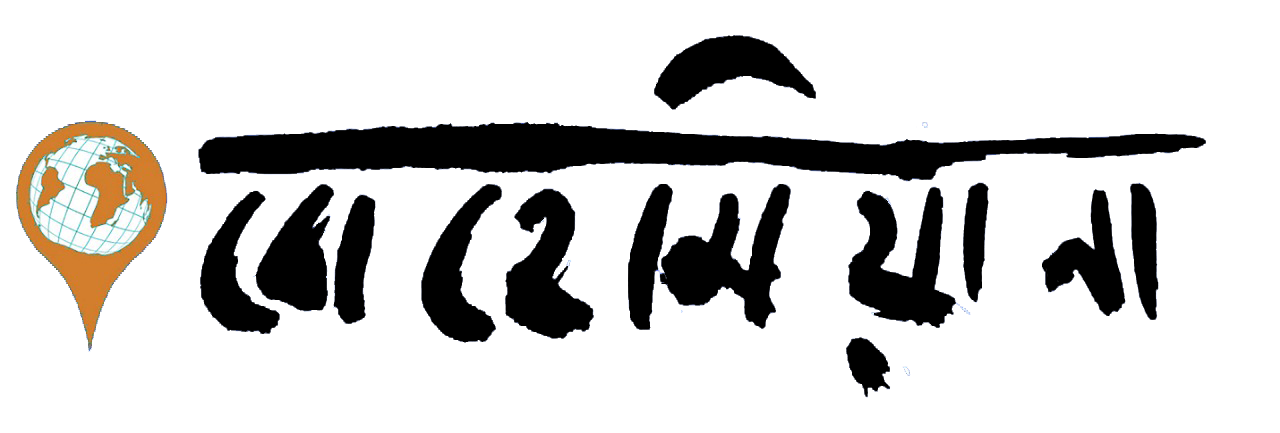More than 140 million people are infected and o.6 million people are died due to Covid-19 pandemic all over the world till now. Each day, nearly 250 thousand of people are infected and more than five thousand people succumb to the disease. In India number of infected people has surpassed one million and the situation is becoming more serious. The public healthcare system of India, even of the advanced countries mostly fail to tide over the emergent pandemic. The World Health Organisation (WHO) has alarmed the people as the situation is becoming more grave. Ruling classes of some countries including India are trying to kick start the stagnant economies with desperation. But the heavy toll of human lives and infections, severe shortcomings in healthcare, job losses among millions of people due to lockdown, desperate efforts of migrant workers returning back to their homes, death of many of them on the road, flocking of millions of surplus labour in the countryside, joblessness, wagelessness, vanishing of the meagre resources they have, semi-starvation or starvation, lack of education for the children of the poor people, etc. have created gravest crisis in India and in the world which is never seen before. The cruel reality is that there are no glimpses of hope to tide over the crisis in near future; in fact, the situation is becoming more complicated and dangerous. In 1918-19, Spanish Flu claimed the lives of 100 million of people in the world which was five per cent of the total population. In India alone, 20 million people died.1 Whether the present crisis is heading to that end or may surpass the past pandemics, that is not fathomable just now.
Some of the people take the present crisis as economic disaster. Some take it as a crisis in healthcare sector. Even seven months after the first break out of the contagion, many are clamouring about the conspiracy of China, or the conspiracies of CIA or Bill Gates behind the pandemic. Still now, many are looking for scapegoats among the blacks, yellow, Mongolians or Muslims for spreading the infections. They are totally unaware about gravity of the crisis. The searching to find the root cause of the crisis are still now feeble, mostly half-hearted, unscientific and devoid of any clear understanding about the inner dynamics of the pandemics developed. In reality, this crisis is created in the trail of the modern capitalist ‘civilisation’ in an irrevocable and uncontrolled manner.
In the last two decades the records of contagious diseases clearly show that the present pandemic due to the emergence of Covid-19 virus is not an accident. As for example, Avian flu of 1997-, 2007-, 2013- (the infections came from chickens, ducks or geese); Nipah virus in 1998 (bats to pigs); SARS in 2002-04 (bats to civets); MERS in 2012 (bats to camels); Ebola in 2013-20 (bats to nonhuman primates); Zika in 2007 (mosquito) and now Covid-19 (bats to pigs/pangolins and then to humans).2 Either from bats and geese to chicken and pigs or from monoculture of industrial farming system, the viruses were spilled over to the humans in the last decades. It may be spread from wet markers also. There are no ‘conspiracies’, but these were the inevitable consequences of capitalist development of modern ‘civilisation’.
Under the capitalist economic system, particularly under the present period of neoliberalism and globalisation, the hankering of capitalist accumulation and super profits accelerated the processes of so-called development, industrialisation, urbanisation, mining, deforestation, destruction of wet lands in unbridled and irrevocable way. The capitalist production system has made deforestation for ‘development’; constructed railway lines and roads through the dense forests and hills; created the insatiable consumerist demands for animal-meat and intruded into the pristine forests; disrupted the ecosystem at large; interrupted the natural habitats of animals and plants which are distinct but interconnected; built the skyscrapers destroying the wetlands; developed indiscriminate and innumerable dams on the rivers disturbing their natural courses, etc. In the process of this draconian destruction under capitalism, the humans are increasingly coming into contact with the forest animals. Viruses are spilled over to humans from the wildlife. The giant multinational meat corporations and the industrial farming followed by them destroyed the normal family-run livestock farming of the pre-, even early capitalist system (which were too not fully immuned from the infections from viruses) and facilitated the spilling over of viruses. Either from big livestock farms or from wet markets viruses jump to humans – in most of the cases through intermediary hosts like bats, pangolin, chicken, ducks and pigs etc. Along with, wildlife trafficking is continually increased to the rich countries where the animals are caged in the private zoos of the millionaires increasing the chances of infections.
We have discussed about the spillover of viruses from wildlife to humans in Wuhan of China and Guinea of West Africa in the 4th part of this article. Two more examples perhaps clarify more.
a) Deadly fever from rodents: In the 1960s, the deadly hemorrhagic fever occurred in South America, Africa and other regions and the virus came from rodents. Agricultural land was prepared by deforestation and rodents got ample food like seeds, grasses, etc. The animals like wild dogs, jaguars, snakes and owls, which fed on rodents were either wiped out or pushed to the denser forest due to deforestation. As a result, the rodents grew rapidly and the death-rate among them plummeted. They came closer to the habitats of humans. Microbes were transmitted from them to the humans. Therefore, by destructing the natural habitats of wild animal, infections spread like wildfire and a pandemic was created.3
b) Avian Flu: It was seen in Hong Kong in 1997. Chickens of poultries were infected from viruses from the host bodies of geese and ducks. The chickens were packed together in narrow spaces (of giant farms). Due to the practice of monoculture, the viruses jumped over from one animal to another with identical genome with ease. The infections quickly spread among other birds and then to humans in the markets.4
Human is part of the nature. He/she are not anyone who are placed outside the nature. Like humans, different wildlife, marine life, plants and microbes are part and parcel of the nature. They are distinctly separate from each other but at the same time they remain in an interconnected sphere. The various instruments of nature and all of these of animals and plants make our eco-system. Under the assault of capitalism this eco-system is on the brink of ruin now. In the pre-capitalist period humans tilled the land; extracted nutrients from the land; and retuned back the nutrients in the form of physiological excreta and remains of the plant and animal bodies to enrich the soil again. When humans came out of the countryside and built towns and cities – and with the ongoing processes of industrialisation, urbanisation, ‘development’ – the excreta and remains of the humans and domesticated animals did not return back to the soil. Instead, these products were accumulated at every nook and corner of the cities; formed garbage; polluted the open and unplanned sewage system; then the pollution transferred to the wetlands, rivers and seas. To replenish the nutrients of the soil modern capitalism developed artificial chemical fertilisers which harmed the soil more than to enrich it.
Following this process, the ‘civilised’ humans of the capitalist system dissociate themselves from the nature due to increasing divisions between towns and villages. The capitalist humans loot wildlife from the forests indiscriminately in the name of development-industrialisation-urbanisation and devastated the ecology – almost nothing is given to the nature in return. In reality, they offer the nature the ‘gifts’ of modern civilisation like carbon di-oxide, methane, nitrous oxides and industrial wastes. Different wildlife, birds and fish become their favourite dishes (humans of pre-capitalist system also consumed that foods, but in much smaller quantity than the present age). Wildlife are caged in private zoos and farmed industrially. Giant corporations have engulfed the smaller family farms. Farming is operated intensively and on a mammoth scale. Thousands of tons of meat are produced and processed from these giant farms per day. The natural habitats of the wildlife are devastated to a great extent. Many wildlife are the reservoirs of microbes like virus and bacteria. These reservoirs are disturbed at will; the natural lifecycles of the wildlife are disrupted indiscriminately; viruses spill over from one animal to another – then to humans. The ecology is destroyed on the whole. An ‘irreparable rift’ is created between humans and nature – the socialists call it ‘metabolic rift’ following Karl Marx. The dissolution created due to the unplanned, unbridled and anarchical development of capitalist production process. As a result, contradiction between capitalism and ecology (and the nature) become so much antagonistic that it might not be resolved without the revolutionising the existing production process.
Consequences of the destruction of the ecology by capitalism manifest disastrously. Global warming is increasing at a rapid pace. Climate is changing fast. Drought-floods, over- and under-precipitation, cyclone-hurricane-typhoon, natural disaster, flash floods, landslides, diminishing ground water, quick melting of the glaciers, rise in sea-level water, possibilities of submerging of coast-cities including Sundarbans, Maldives in near future, extinction of many animals and species, etc. are gravitating the earth towards devastation in a faster rate. The insatiable hunger for profits and immanent dynamics of the capitalism are pushing the human society to veritable collapse. The contradiction between nature and capitalism becomes extreme and unsolvable. In fact, capitalist system cannot rescue the inevitable disaster. This requires a different society and production system.
In short, the marches of neoliberal capitalism itself created the present contagion. Successive epidemics in the last few decades and the present pandemic due to Covid-19 amply demonstrated that if capitalism exists, there will be no respite from contagious diseases. If the lifespan of capitalism prolongs, there will be inevitable destruction of the nature and ecology in near future.
The ecological crisis has been exacerbated by the health crisis. Neoliberal capitalism has almost completely destroyed the public health system and built a corporate health system. Not just the developed capitalist European countries, even in developing countries like India, the public health system is drying up due to lack of funds, while increasingly giving priority to private and corporate healthcare system. In India, the central and the state governments spend only a meagre 1.8 per cent of the GDP on healthcare, compared to the minimum of 4 per cent, as proposed by the WHO. Moreover, the super profit-making drug companies have raised the prices of anti-bacterial vaccines and medicines so much that it is beyond the reach of many people even in the developed countries, forget about the less developed or the developing countries. Thus, the cost of tests, masks, sanitizers, and treatment has come down heavily on the daily wage earners of the country. The statistics for the percentage of poor working people infected with Covid-19, or eventually dying because of it, is unknown in a country like India. But in developed countries such as America or Britain, it can be observed that the blacks, Hispanics, Asians, and the working class are generally the most affected and prone to death. In a class-based society, the way in which the poor working class have died en masse in any pandemic or epidemic in the past, is thus again being repeated. The bad news for the poor working class is that some experts believe that community spreading has already started in some states of India, albeit the government is not acknowledging it.5 The mathematical model developed by the Indian Institute of Sciences Bangalore has estimated that the number of infections in India will cross 10 million by the end of October, reach 52.60 million by March 2021, and more than 2.4 million people are expected to die by March!6 If their estimates are indeed true, it is unimaginable what will happen to the poor working class, especially with a frail public healthcare system in India.
The ecological crisis (with which the Covid-19 crisis is closely linked) and the health crisis is being exacerbated by the global economic crisis. In fact, neoliberal capitalist analysts and economists are more concerned in calculating how much their profits and businesses will be affected. The World Bank reports that the current Covid-19 crisis is stepping into an economic recession as severe as the crisis pre-World War II. As a result of the current crisis, per capita production will decrease like the crisis of 1870. The economies of the progressive and developing countries will shrink to a level that has not been seen in the last 60 years. Furthermore, the current crisis is estimated to be twice as fatal as the financial crisis of 2007-09.7 In fact, the world economy (even in India) was showing clear signs of recession even before the Covid-19 pandemic began. South China Morning Post reported in June 2019, “Global economic recession is no longer a threat but an inevitability…Global trade growth is at its slowest in 10 years, according to the World Bank.”8 The chief economist of the world renowned economic rating agency Moody’s said in October last year that the global economy is set to slow down in the next 12-18 months.9 The fact that the so called “business cycle” in capitalist economy would resurface was forecasted clearly in 2019.10 Thus, it is not surprising that the slow moving global economy shall collapse as a result of the Covid-19 crisis.
There is no doubt that the growing repercussions of the global economic crisis will affect the world’s poorest working class the hardest. Meanwhile, the International Labour Organisation (ILO) has said in its latest report that the number of unemployed people in the world in the second financial quarter of 2020 stood at 40 crores.11 According to the World Bank, the biggest blow will fall on the unorganized or informal sector, which accounts for one-third of the world GDP and employs 80 per cent of the working class in developing countries.12 According to the World Bank, the Gross Domestic Product (GDP) growth rate, which is considered a key indicator of a country’s development, will be in a dismal state. For example, the economies of the developed countries will shrink at a rate of 7 per cent. The growth rate of South Asia (including India) will be -2.7 per cent, in sub-Saharan Africa -2.8 per cent, in the Middle East and North Africa -4.2 per cent, in Europe and Central Asia -4.7 per cent, and in Latin America -7.2 per cent.13 In April, the WTO has announced that the world trade will shrink by 13 per cent in the best case scenario and by 32 per cent in the worst case scenario!14 In the same month of April, the Food and Agriculture Organisation (FAO) of the United Nations had said that the world is “on the brink of a hunger pandemic” that could lead to “multiple famines of biblical proportions” within a few months. Additionally, they have opined that the world will face a humanitarian crisis that has not been seen since World War II. There will be famines in about three dozen countries.15
Meanwhile, the shadow of the crisis has begun to thicken as the global production economy relies heavily on the global supply system (global supply chains/value chains). Since the 1980s and 1990s, large corporations in the developed world have shipped the bulk of their basic production to countries where workers’ wages are only a fraction to that in developed countries and land rents are much cheaper. In 1950, 34 per cent of the world’s industrial workers were in the “less developed” countries, and in 1960 about 53 per cent; in 2010, it increased to 79 per cent. 83 per cent of works in the manufacturing sector were concentrated in the developing and underdeveloped countries.16 Multinational corporations such as General Electric, Exxon, Chevron, Hewlett & Packard, General Motors, IBM, Johnson & Johnson, Apple, etc. have more workers in the developing countries than in their own. They have left most of the responsibility of running the company, marketing, financing the production of different parts, production of different parts and assembling, packaging, supplying, etc. to different relatively smaller companies. Those companies have again sub-contracting to various second, third, fourth tier companies, and even to one-man (self-employed) companies. The network of these manufacturing systems is so vast and complex that even the major multinational companies are not aware of who is producing the smallest parts of their main products (Maruti and Honda companies in India are operated in this way). However, these “supply chains” have been trapped in deep recession. The “global lockdown”, as termed by the IMF, has resulted in a sharp decline in demand, and thus, a decline in orders. As a result, large- and small-scale industries of supplier countries (including China, Thailand, Malaysia, Taiwan, Mexico, Vietnam, Bangladesh) have fallen into a major crisis.17 In one word, the world economy has come to nearly a staggering halt. The crisis is so deep that world crude oil prices fell to zero dollars per barrel in April, an event unprecedented in history.
But what will international capitalism do in this crisis? Will they pay the workers when the economic wheel is almost closed? Or arrange food, medical facilities, clothes, accommodation free of cost? Many, including the class-conscious proletariat, know the world capitalism will not do any of that. Already, advanced capitalist countries like the United States of America have begun to subsidize their corporations by billions of dollars. Undoubtedly, other countries will follow the same path, as they did during the crisis of 2007-09. Their policy is to subsidize the capitalists, of which a miniscule fraction will trickle down to the poor working class. History bears witness to the fact that a solution like this could not address the problems of the workers. Neoliberal capitalism in the 1970s (whose “worthy” leaders were Reagan and Thatcher) said that from now on, the market would determine everything. In the various countries embodied in that neoliberal ideology, a series of attacks on the working class of the world began. In the name of making businesses more “efficient” by slimming and trimming in the developed countries in particular, world capitalism launched its mission of laying off the working class. The public welfare system that the state operated on (according to Keynes’ economic theory) was gradually taken away from the working class. In the sixth part of this compilation, we have discussed some of the current plight of the people infected with Covid-19 in Britain, Italy, Spain and the United States of America, especially as a result of the destruction of public healthcare systems. Hence, in the current crisis, it is safe to say that the world’s capitalists will place all the burden of their crisis on the shoulders of the entire poor labouring people, including the proletariat. Needless to say, the predictions of the World Bank or the ILO will not have any good news for the poor workers.
The ruling class of India are also treading a similar path. At a meeting of Chief Ministers on April 26, the Prime Minister praised the Congress Chief Minister of Rajasthan, “We have to carry out reforms too… We can turn this crisis into a big opportunity… I want to congratulate Ashok Gehlot… He has increased the time limit for working hours… Rajasthan has shown the way.”18 As many already know, the Rajasthan government has increased the daily working hours off workers from 8 hours to 12 hours in the name of tackling Covid-19. Six more state governments have followed the same path. Additionally, the governments of Uttar Pradesh, Madhya Pradesh and Gujarat have repealed all but three of the labour laws for the next three years. The Uttar Pradesh government’s decision is so monstrous that the determination of working hours, leave, overtime regulations, special arrangement for women workers, their night work, canteen facilities, fire safety, first aid, union formation, etc. has been discarded from existing factory, shop and office labour laws. In this situation, even the leading bourgeoisie magazines, such as Business Standard, have commented, “It will lead to slave-like conditions for workers.”19
In fact, just after a few days of the onset of Covid-19 infections in India, the bourgeoisie mouthpieces had called for “turning this crisis into an opportunity”. Infosys chief Narayana Murthy said at the end of April, “Indians should work for 60 hours a week for the next 2-3 years.”20 Arvind Panagariya, a former advisor to the Central Government, told the government that the COVID-19 pandemic is a "…time for thinking long-term. It will be a pity to let the crisis go to waste. The current crisis will only last till a vaccine becomes available… Multinationals will be seeking greater diversification of their activities in the wake of Corona. India must not miss this opportunity… The crisis also gives the government the opportunity to introduce reforms in areas of land and labour markets.”21 The Vice President of Reliance’s Observer Research Foundation made an explosive remark, “Crises precede reforms… Covid-19 is the perfect storm for reforms. Economically, Covid-19 is a 1991 moment. Geopolitically, Covid-19 is a Balakot moment. Constitutionally, Covid-19 is abrogation of Article 370 moment… The usual reforms of land, labour and infrastructure are behind us. Overnight, this troika that was seen to be ‘aspirational’ now needs to be seen as a starting point. The circle of logic around these three key reforms is simple. India needs jobs. Jobs are created by private capital. Private capital needs a business environment that is entrepreneur-friendly, or at least doesn’t hate or have contempt for these creators of enterprises and jobs, wealth and value.”22 It should not be difficult to understand how the author of the article suggested the use of Covid-19 as the “storm”. Shortly afterwards, CII, FICCI and ASSOCHAM, three leading organizations of the Indian capitalists, advised the government to suspend labour laws for 2-3 years.23 Thus, the ruling class is determined to turn the Covid-19 crisis into a class-oriented “opportunity” for the bourgeoisie.
The Prime Minister has spoken of “self-reliance” 26 times in his May 12 address to the nation. Within days of his "self-reliance" message, coal, minerals, defense production, civil aviation, airports, power distribution, nuclear power and space were made available to private capital. This opened huge avenues for Ambani, Adani, Tata Power, JSW Energy, Birla Group's Hindalco, Vedanta Aluminum, etc.24 Significantly, the announcement of this massive privatization was part of the government's package to address the Covid-19 crisis. The Prime Minister even announced India's involvement in the global supply chain, saying "We have to face stiff competition.” Needless to say, this means massive ‘reforms’ in the labour and land market – that is, paying workers low wages, unpaid overtime work, repealing labour laws, relaxing land acquisition laws, depriving them of trade union rights, and so on. Otherwise how will India “compete” with China?
Thus, the “opportunity” of the Covid-19 crisis was exploited to bring about massive reforms in the economy and the labour market, and the burden of all crises was shifted to the poor working people. In late June, the IMF announced that India's GDP would not only not grow by 2020-21, but would shrink by 4.5 percent, an event unprecedented in the country's history.25 According to the latest CMIE estimates, about 3 crore workers have not found employment despite the 'unlock' phase being launched in June. It is estimated that many migrant workers, around 2 crores, are being forced to work in rural agriculture at any wage and under any conditions.26 CMIE has clearly stated that the introduction of 12 hours of labour instead of the usual 8 hours of labour will further bloat the already puffed up figures of the unemployed as well as lower wages in general.27 The country's micro, small and medium enterprises or companies – which is about 50 million, who produce 45 per cent of the country's total manufacturing industry, which contributes to 40 per cent of the country's exports and 30 per cent of the country's GDP, and employ a total of 110 million workers – have fallen into a grave situation now.28 Significantly, many of them are ancillaries of larger industries or associated with the supply chains. In June, 35 perc cent of these industries and 37 per cent of self-employed enterprises were said to be shutting down in a survey.29 72 per cent said that they must lay off workers.30 The forecast of what the big corporates are going to do in the future is very clear in this example. The seriousness of the situation in the rural areas will probably be revealed soon. It is not difficult to understand that if the wheel of the economy does not turn, the millions of workers associated with it will face a catastrophic future, if not already. Death by starvation and famine are probably not too far away either.
There are multiple crises vested in the current crisis. Firstly, the crisis of the Covid-19 virus from wildlife. As we have seen, this crisis is closely linked to the ecological crisis. It is impossible to repair the rift or separation of nature and ecosystem within the capitalist system because the conflict of capitalism with the ecosystem has reached an extreme or non-resolvable point.
Secondly, there is the health crisis. The state-controlled healthcare system of many countries (with the exception of a few countries) is in such a critical condition that it is either incapable or semi-capable of delivering good healthcare to thousands of poor working people even in ordinary times. In this situation, it is very clear that the Covid-19 treatment of millions of poor working people is becoming increasingly impossible. Indeed, the way neoliberal capitalism has destroyed the public healthcare system over the last 30-40 years and sold it to private or multinational capitalists has made it impossible for capitalism to deliver medicine to the common man. This is also a contradiction which will not be resolved under the present economic system.
Thirdly, the clouds of the recession in the world economy has been steadily hovering since 2018-19. The Covid-19 crisis has aggravated it. As a result, the late stage capitalism we are witnessing now is in the deepest crisis. Each capitalist crisis means mass destruction of productive forces, massive unemployment, skyrocketing inflation, severe inequality, starvation, and famine, etc. This crisis is moving in that direction with perhaps its worst form. Capitalism has handled its crisis by waging war in the past, that is, through massive arms production. Or the state has pumped huge amounts of money into the economy (which is an attempt to save the bankrupt companies) to boost the economy. This time, too, they will probably take that road. But the magnitude of this crisis is so vast or so severe that one does not know whether it can save capitalism. But the inevitable destruction of productive forces, the destruction of nature and the ecosystem, the unprecedented loss of life, the starvation and the famine that is unfolding, raises the question of whether human civilization will survive. Indeed, capitalism has now become a huge obstacle to the progress of human civilization. There is no solution to the current crisis in capitalism if the present system exists.
However, in today's world, there is a lack of conscious agitation to acknowledge or realize this awful reality. How that movement will take shape is a different question. But without removing the unplanned, uncontrolled, and extremely chaotic system of production of capitalism and building a planned, cooperative, collective, and socially owned production and distribution system, the huge rift of human civilization with nature cannot be repaired. And it is not possible to save this human civilization without building a society which would inscribe on its banner: “from each according to his ability, to each according to his needs”. This system is the highest stage of communism. In some countries, some experiments have been made to organise socialist society, but that was failed. So the situation as of now is that, either we have to take the path of capitalism and inevitably accept the destruction of this planet or we have to move towards advanced human civilization, that is, socialism, learning from the past mistakes. There is no other alternative now other than to build a strong and sustainable ecological-socialist movement.
References:
1. Davies, Mike; ‘The Monster at out Door. The Global Threat of Avian Flu’, New York: The New Press.
2. Norfield, Tony; 11.06.2020, https://mronline.org/2020/06/11/viruses-imperialism; accessed 12.06.2020.
3. Levins, Richard, September 2000, Monthly Review. Choonara, Joseph, 22.03.2020, http://isj.org.uk/socialism-in-a-time-of-pandemics/; accessed 12.05.2020.
4. Choonara, Joseph, 22.03.2020, http://isj.org.uk/socialism-in-a-time-of-pandemics/; accessed 12.05.2020.
5. 13.06.2020, https://timesofindia.indiatimes.com/india/community-transmission-of-covid-19-on-in-many-parts-of-india-icmr-survey-not-reflective-of-current-reality-experts/articleshow/76355865.cms; accessed 30.06.2020.
6. 17.07.2020, Anandabazar Patrika.
7. 18.06.2020, https://www.weforum.org/agenda/2020/06/coronavirus-covid19-economic-recession-global-compared/; accessed 20.06.2020.
8. 09.06.2019, https://www.scmp.com/comment/opinion/article/3013604/brace-global-recession-unlike-any-other-amid-world-polarised-us-and; accessed 29.06.2020.
9. 16.10.2019, https://www.cnbc.com/2019/10/16/global-economy-awfully-high-chance-of-economic-recession-moodys-says.html; accessed 29.06.2020.
10. October 2019, Monthly Review.
11. 30.06.2020, https://economictimes.indiatimes.com/news/international/business/global-labour-market-uncertain-no-return-to-pre-pandemic-levels-in-2020-ilo/articleshow/76712702.cms?from=mdr; accessed 30.06.2020.
12. 08.06.2020, https://www.worldbank.org/en/news/feature/2020/06/08/the-global-economic-outlook-during-the-covid-19-pandemic-a-changed-world; accessed 24.06.2020.
13. Ibid.
14. 08.04.2020, https://economictimes.indiatimes.com/news/international/business/wto-forecasts-trade-plunge-in-2020-rebound-for-2021/articleshow/75050099.cms; accessed 05.05.2020.
15. 22.04.2020, https://countercurrents.org/2020/04/world-on-brink-of-a-hunger-pandemic-says-un-food-agency-chief; accessed 23.04.2020.
16. Smith, John; Imperialism in the Twenty First Century, New Delhi: Dev Publishers and Distributors, pp 101-02.
17. June, 2020; Monthly Review, https://monthlyreview.org/2020/06/01/covid-19-and-catastrophe-capitalism/; accessed 02.06.2020.
18. 02.05.2020, https://rupeindia.wordpress.com/2020/05/02/may-day-2020-and-the-creators-of-wealth/; accessed 03.05.2020.
19. 08.05.2020, https://wap.business-standard.com/article-amp/economy-policy/up-govt-to-exempt-businesses-from-all-but-three-labour-laws-for-3-years-120050701531_1.html; accessed 08.05.2020.
20. 30.04.2020, https://www.thenewsminute.com/article/indians-should-work-60-hours-week-next-2-3-yrs-revive-economy-narayana-murthy-123661; accessed 01.05.2020.
21. 21.04.2020, https://news.rediff.com/commentary/2020/apr/21/dont-let-corona-crisis-go-waste-exadvisor-to-pm/5caf8991f9189866e8eae62dbee07d36; accessed 11.05.2020.
22. 10.04.2020, https://www.orfonline.org/expert-speak/covid-19-the-perfect-storm-for-deep-reform-64401/; accessed 11.05.2020.
23. 08.05.2020, https://economictimes.indiatimes.com/news/economy/policy/lockdown-hit-industry-demands-suspension-of-labour-laws-for-2-3-yrs/articleshow/75633578.cms?from=mdr; accessed 11.05.2020.
24. 16.05.2020, https://www.businesstoday.in/current/economy-politics/big-beneficiaries-of-tranche-iv-stimulus-adani-vedanta-tata-power-anil-ambani-reliance/story/404040.html; accessed 17.05.2020.
25. 24.06.2020, https://indianexpress.com/article/business/economy/imf-india-economy-contraction-2020-6474451/; accessed 24.06.2020.
26. 09.07.2020, https://www.newsclick.in/Job-situation-continues-to-be-grim-despite-unlock; accessed 09.07.2020.
27. 30.06.2020, https://economictimes.indiatimes.com/jobs/high-labour-supply-will-lead-to-drop-in-wages-in-urban-india-cmie/articleshow/76706344.cms; accessed 30.06.2020.
28. 03.05.2020, https://indianexpress.com/article/business/economy/india-coronavirus-lockdown-economy-msme-6391186/; accessed 03.05.2020.
29. 02.06.2020, https://www.newsclick.in/35-per-MSME-begun-shutting-shop-due-COVID-19-situation-survey; accessed 05.06.2020.
30. 05.06.2020, https://www.newsclick.in/over-70-per-MSME-intend-reduce-workforce-AIMO-survey; accessed 05.06.2020.

.jpg)






